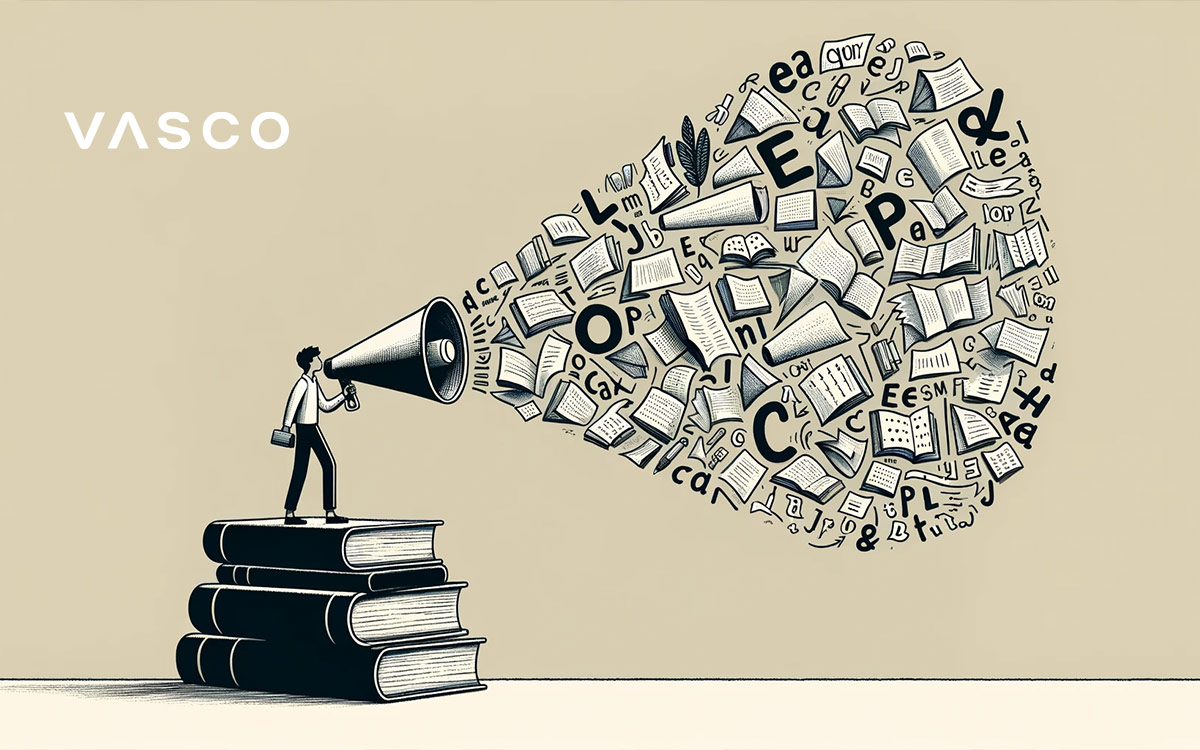Embarking on the journey to learn a new language often starts with a fundamental question: “What’s the easiest language to learn?”.
This exploration is not just about pinpointing what are some easy languages to learn but understanding the various facets that contribute to the ease of language learning.
In this comprehensive guide, we will delve deep into the world of languages, examining them through various lenses to provide a clearer picture of what makes a language easier to learn for different individuals.
Here’s a glimpse of the sections we will cover:
- Easiest Languages for English Speakers
- Easiest Asian Languages
- A Global Perspective
- Factors Influencing Language Learning
- Concluding Thoughts on Easiest Languages to Learn
FAQ:
Is there a universally easiest language to learn for everyone?
Why is Spanish often considered one of the easiest languages for English speakers to learn?
Can cultural exposure influence the ease of learning a new language?

Table of Contents:
Part 1: Introduction to Language Learning
Understanding the fundamentals of language learning is key to addressing the query: “Which language is the easiest to learn?”. The ease or difficulty of learning a new language is subjective and varies from one individual to another.
This variability is influenced by the learner’s native language, prior linguistic experiences, learning environment, and personal motivations.
In this context, the concept of the easiest language is not a one-size-fits-all, but a personal perception shaped by individual circumstances.

Part 2: Easiest Languages for English Speakers
As we venture into the realm of language learning, it’s essential to recognize a distinct group: English speakers.
How are English speakers different?
The motivations for English speakers to learn new languages are as diverse as the languages themselves. From career advancement and travel to cultural exploration and personal enrichment – in this sense they are not so different.
What sets English speakers apart in this linguistic journey is their unique starting point: the English language has spread globally, being an official language in a lot of places on Earth.
It’s also considered to be a rather simple, both phonetically and gramatically, due to many influences from another languages.
2.1 Spanish: A Close Linguistic Relative
Spanish, often cited as the easiest language to learn for English speakers, boasts several features that facilitate its learning.
Though English is generally considered as a Germanic language, it shares many similarities with romance languages as well. The phonetic language consistency of Spanish – which happens to be a romance language – makes pronunciation straightforward, and the overlap of Latin-rooted vocabulary that eases the acquisition of new words.
Additionally, the widespread availability of Spanish media and learning resources contributes to its accessibility.
Is Spanish the easiest language to learn for anyone globally? Well, that’s not equally true. While some may find it very easy, especially if they are native romance language speakers, it’s still considered more difficult than e.g. the very English language itself.
2.2 Dutch: A Gateway to Germanic Languages
Dutch is a hidden gem for English speakers exploring what is the easiest foreign language to learn. Its grammatical structure, though complex, shares many similarities with English, making it relatively easier to grasp.
The Dutch language also serves as a bridge to other Germanic languages, providing a foundation that can ease the learning of German and Scandinavian languages.

Part 3: Easiest Asian Language to Learn
In our journey through the world of languages, we now turn our gaze towards the East, exploring the diverse and rich linguistic landscape of Asia.
Asian languages, with their unique scripts, tonal variations, and cultural richness, often present a fascinating challenge to language learners. However, amidst this diversity, some languages stand out for their relative ease of learning.
3.1 Bahasa Indonesia: Simplicity in Grammar and Phonetics
When discussing the easiest Asian language to learn, Bahasa Indonesia often emerges as a top contender.
Unlike many Asian languages, it does not have a tonal system, making its pronunciation more approachable. Its grammatical structure is straightforward, with no gender or complex verb conjugations, simplifying the learning process for beginners.
3.2 Japanese: Complexity and Simplicity Intertwined
Japanese presents an interesting case. While its writing system, comprising Kanji, Hiragana, and Katakana, can be daunting, the language’s grammar is relatively simple.
Japanese verbs are conjugated consistently, and there are no articles or gender distinctions in nouns, which can make some aspects of the language easier to learn than in other languages.

Part 4: A Global Perspective
As we expand our linguistic horizons, it’s a time for a part of our exploration that transcends regional boundaries and delves into languages that have a worldwide impact.
4.1 Esperanto: Designed for Ease
In the realm of constructed languages, Esperanto stands out as a prime example of what is the easiest language to learn in the world.
Designed to be a universal second language, its regular and simple grammar, along with a vocabulary derived mainly from European languages, makes it highly accessible.
4.2 Swahili: The African Linguistic Melting Pot
Swahili, a widely spoken language in Eastern Africa, is our suggestion for the easiest second language to learn when it comes to this majestic continent.
Its use of Latin alphabet, relatively simple grammatical rules, and status as a lingua franca in various African countries make it an appealing and practical choice for learners.

Part 5: What’s the Easiest Language to Learn from a Linguistic Perspective?
In our quest to uncover the easiest languages to learn, we reach a crucial aspect: evaluating languages from a pure linguistic perspective.
This section strips down the subjective layers of personal preference and cultural interest, focusing instead on the structural and phonetic elements that inherently define the ease of a language.
Linguistic Simplicity and Regularity
Here, we’ll explore languages known for their linguistic simplicity – those with consistent grammatical rules, minimal verb conjugation complexities, few noun cases, and clear-cut pronunciation patterns.
Languages that exhibit these features are often considered easier to grasp from a structural standpoint.
Phonetics and Pronunciation Ease
In addition to grammar, the phonetic structure of a language plays a crucial role in its ease of learning.
We will examine languages with straightforward pronunciation rules and minimal exceptions, providing insights into why these phonetic characteristics contribute to language learning efficiency.
Grammatical Consistency and Exceptions
Another key aspect is the level of grammatical consistency and the presence (or absence) of irregularities and exceptions within a language.
This understanding is invaluable for learners in making informed decisions about which language might align best with their learning capabilities and goals.
While the answer might still vary a bit depending on the individual, the answer is still undoubtedly English. Its simple syntax and vocabulary make it quite universally easy to learn.
Part 6: Factors Influencing Language Learning
Having journeyed through specific language groups and the global linguistic landscape, we now pivot to understanding the underlying factors that influence the ease of language learning.
Linguistic Similarities and Differences
One of the primary factors in determining the easiest language to learn is the degree of similarity between the learner’s native language and the new language. Languages that share the same language family, script, or grammatical structures often have a lower learning curve.
Cultural Exposure and Resources
The availability of cultural resources such as films, music, books, and even community interactions in a target language can significantly ease the learning process. A language immersed in a rich cultural context often becomes more accessible and engaging to learn.

What’s World’s Easiest Language to Learn? An In-Depth Exploration
| Language | Writing System | Grammar Complexity | Vocabulary Similarity to English |
|---|---|---|---|
| Esperanto | Latin alphabet | Very Low | Medium |
| Spanish | Latin alphabet | Medium | High |
| Italian | Latin alphabet | Medium | High |
| Swahili | Latin alphabet | Low | Low |
| Indonesian | Latin alphabet | Low | Low |
Concluding Thoughts
In conclusion, the endeavor to ascertain what is the easiest language to learn for everyone evolves into a quest that is highly individualized.
And if you feel like learning languages might not be your goal, be sure to consider getting a voice translator from Vasco. With even 108 languages at your disposal, you can finally travel and do your job in an international setting hassle-free. The photo translator feature can help you understand foreign alphabets when abroad or translate documents when searching for a job.
With 96% accuracy, this universal translator can be your best companion in every situation where you experience the language gap.
No matter your choice, we truly believe world gets more accessible when you can understand languages!











